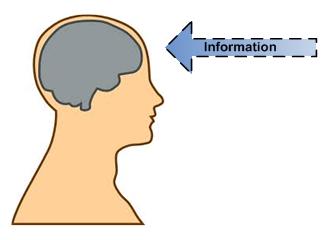Preferences for Processing Information
The Felder-Silverman model classifies students’ learning preferences into one of the categories in each of the following four learning style dimensions that combine both perceptual and processing modes:
- Sensing/Intuitive
- Visual/Verbal
- Active/Reflective
- Sequential/Global
Two of the style dimensions relate to perceiving information: sensing/intuitive and visual/verbal:
The other two style dimensions relate to processing information: active/reflective and sequential/global,
As with all the learning styles, learners may have a strong preference at one end of a dimension or a more moderate mix and blend of preferences among several dimensions.
PERCEIVING INFORMATION DIMENSIONS
Take in Information
The Sensing-Intuitive scale determines how a person prefers to take in information.
Sensing learners prefer to take in information that is concrete and practical. They are attuned to sights, sounds, and physical sensations. They tend to be concrete, practical, and methodical. They are oriented towards details, facts, and statistics, and prefer to use proven hands-on procedures.
Intuitive learners prefer to take in information that is abstract, original, and oriented towards theory. Intuitive learners are attuned to memories, thoughts, and insights. They are more comfortable with abstractions and theories. They look at the big picture and try to grasp overall patterns and are more likely to be creative problem solvers.
Presentation of Information
The Visual-Verbal scale determines how a person prefers information to be presented.
Visual learners prefer visual presentations of material. They prefer to learn with pictures, diagrams, graphs, flow charts, tables of data, and physical demonstrations.
Verbal learners prefer explanations with words, both written and spoken. They prefer to read a book or listen to a speaker.
PROCESSING INFORMATION DIMENSIONS
Process Information
The Active-Reflective scale determines how a person prefers to process information.
Active learners learn by doing something with information through engagement in physical activity. They prefer to process information by discussing it and trying it out.
Reflective learners learn by thinking about information. They prefer to think things through and understand things before acting/experimenting.
Organize Information
The Sequential-Global scale determines how a person prefers to organize information.
Sequential learners prefer to organize information in a linear, sequential and orderly manner. They prefer a step-by step-process which is logical and systematic.
Global learners prefer to organize information more holistically and in a seemingly random manner. They prefer to see the “big picture” before they tackle the details. They think in a systems-oriented manner.
Reference:
Felder, R. M., & Solomon, B. A. (n.d.). Learning styles and strategies. Available from http://www.ncsu.edu/felder-public/ILSdir/styles.htm
Links
Knowledge, Skills and Attitudes
Knowledge, Skills, Attitudes and Habits

